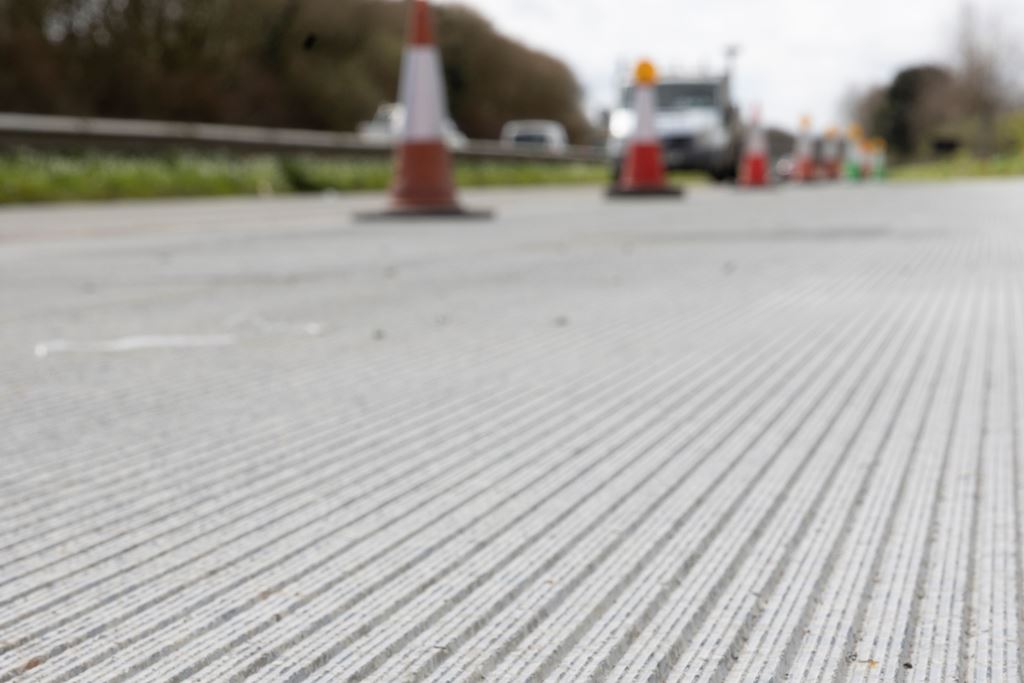Tests have shown that five different patterns of concrete running surfaces that were laid over a 1.5km section of the eastbound A30 near Penzance last year have all reduced traffic noise by up to seven decibels.
The concrete lobby has long promoted the maintenance benefits of hard-wearing concrete road surfaces but the noise made by contact with tyres means that both motorists and neighbours generally prefer asphalt running surfaces. Concrete roads need grooves for drainage purposes and skid-resistance, but it is the grooves that cause the thrum-thrum noise.
Trials of so-called ‘whisper concrete’ were conducted by the national roads agency in the 1990s, with some of the aggregate left exposed on the surface rather than brushed into the grooves, but the material was abandoned in 2001.
While no one appears to be using the term whisper concrete anymore, the concept has been revived as part of National Highways’ drive to renew existing concrete carriageways.
A team combining Tarmac, Wirtgen, Belgian paving contractor Topoff and Atmo Technology tested five surface profiles on the A30 with differing groove dimensions and arrangements.
In a single-pass process treatment, grooves were created into the existing concrete pavement while grinding was applied onto raised ‘turrets’ on the surface to add texture and improved skid resistance.
Topoff worked with construction equipment supplier Wirtgen to develop and adapt a machine that can create the grind and groove of the concrete surface in a single pass.
Atmo Technology developed a mobile sound monitoring device to assess and record noise levels generated by the different surface profiles.
All five profiles delivered a significant road noise reduction and Tarmac will continue to work with National Highways to establish the preferred profile for future projects, Tarmac said.


Around 400 miles (4%) of the strategic road network in the UK is comprised of concrete roads, which were typically built in the 1970s and 1980s. Diamond fine milling is traditionally used for concrete resurfacing but this process removes around 3mm of road material with each treatment and delivers an expected life of five years with each intervention.
The new application can deliver 10-15 years of life before intervention is required, therefore improving the whole-life cost benefit of the asset with less intervention needed across the total lifecycle.
The new approach does not cause any damage to joints in the pavement, reducing additional maintenance costs, Tarmac said.
Tarmac regional contracting director Nick Angelou said: “This significant trial has helped to develop a solution for concrete roads which can reduce noise for neighbouring communities as well as extend the lifecycle of the asset to deliver financial and environmental savings by eliminating the need for earlier intervention.”
National Highways’ concrete roads chief Nick Knorr said: “This trial was part of our concrete roads programme, which will ultimately replace all of our existing legacy concrete roads. Achieving this goal will take time and significant investment, so it is essential that we find cost effective ways of extending the life of those still in use until they can be replaced.”
He described Tarmac’s ‘next generation concrete solution’ as “a promising technique”.
He said: “We have seen positive results related to noise reduction and ride quality. Ongoing monitoring and future trials will confirm its full impact on asset life extension but the initial observations are encouraging.”

